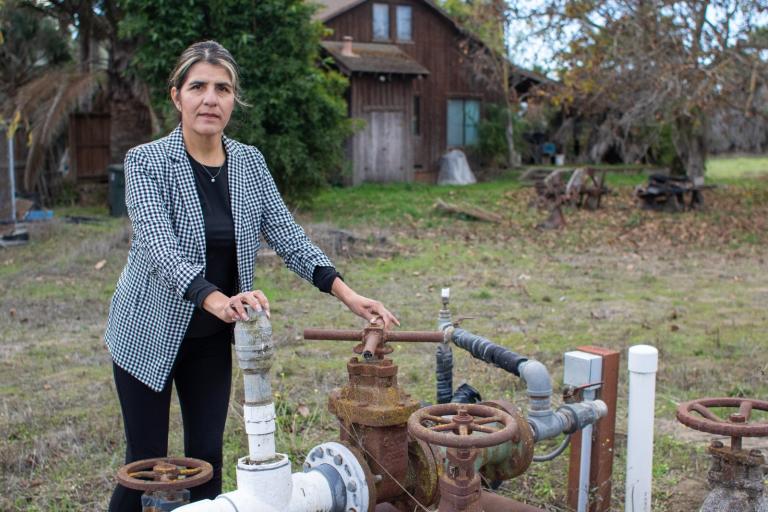
This post concludes the “Walmart’s Greenwash” series. To check out the rest of the series, follow the links at right, or start with the introduction.
Walmart’s sustainability campaign is not your typical corporate greenwash. It is more complex and clever than that. It has enough substance mixed in with the spin to draw you in. It’s easy to get swept up in the big numbers Walmart can roll out — like the 30 tons of plastic hangers it recycles every month — and to be charmed by the very fact of this giant company, with its hard-nosed corporate culture, using a word like “sustainability.”
More than a few environmentalists have been won over. With their endorsements and the flood of positive press that seems to follow each of Walmart’s green announcements, the company has managed to turn around flagging poll numbers, shift its labor practices out of the limelight, and, most crucially, crank up its expansion machine.
The environmental consequences of Walmart’s ongoing growth far outweigh the modest reductions in resource use that the company has made. Walmart’s business model and its future success depend on further accelerating the cycle of consumption, industrializing our food supply, and exacerbating sprawl. It’s not just Walmart, but also Target, Home Depot, and other big chains. The big-box model is “efficient” only to the degree that many of its costs are borne by the planet and the public at large. As these retailers take over an ever-larger share of the economy, more sustainable enterprises and systems of production and distribution are squeezed out.
Walmart’s expansion is not inevitable. The rise of Big Retail, much like Big Ag, has been aided and abetted by government policies and a host of hidden and not-so-hidden subsidies (which I detail in my book Big-Box Swindle).
Lately, though, instead of advocating for new and better policies, mainstream environmental groups having been abetting Walmart’s growth and helping to secure its future supremacy. It’s time to drop that failing strategy.
In writing this series, I didn’t set out to do the kind of he-said-she-said journalism that gives both sides equal space — especially because the media’s coverage so far has closely followed Walmart’s narrative. I did, however, ask Brooke Buchanan, Walmart’s director of sustainability communications, to respond to the main points raised in the series. She declined.
To bring the series to a close, I’d like to offer a few thoughts on how we might more effectively respond to Walmart’s sustainability campaign.
1. Push the media to hold Walmart accountable
It’s usually rewarding for journalists and researchers to uncover things that haven’t been reported elsewhere, but it happened so often while I was writing this series that I actually found it more troubling than exciting. Despite the extensive media coverage of Walmart’s sustainability campaign, key facts have gone unreported and crucial issues unexplored. The media have not reported on the miniscule progress Walmart has made toward its oft-repeated goal of being supplied by 100 percent renewable power, for example. Nor have any reporters detailed how, even as Walmart was winning kudos for a public statement in support of government action on climate change, it was funneling millions in campaign cash to lawmakers who would ensure such legislation never became law.
Journalists ought to be digging into issues like this. Given the state of newsroom budgets, however, that’s not likely to happen without an assist from the environmental community. There’s much that environmental bloggers could do to improve the overall balance of coverage and introduce more critical analysis.
A bigger responsibility lies with mainstream environmental organizations. So far, no group has taken up the task of evaluating what Walmart is and isn’t doing compared to what it should be doing, or providing some benchmarks to define what constitutes sustainability in retailing. Without this, journalists will keep taking their cues from Walmart’s press releases and the company will continue to reap a public-relations jackpot without any real public accountability.
2. Focus on the right question
Even many environmentalists who support Walmart admit that the company is fundamentally unsustainable. But they frame the debate in terms of a pragmatic acceptance of Walmart’s existence. They ask, Isn’t it better that Walmart make some improvements than not?
That’s the wrong question. Here’s the right one: Is allowing Walmart to take over an even larger share of our economy good for the planet? Because by cheering on Walmart’s modest sustainability efforts, environmentalists are paving the way for the corporation’s future growth. Over the last seven years, since launching its environmental initiative, Walmart has expanded its U.S. operations by one-third. It’s now making new inroads in East and West Coast cities, where it sees opportunities to add hundreds of supercenters and push its national grocery market share from one-quarter to one-third or more. Meanwhile, the company’s greenhouse-gas emissions are increasing, not shrinking. Worse, Walmart’s expansion is driving more sustainable enterprises out of business and precluding the development of others, just as a flurry of new enterprises — locally owned stores, small-scale food producers, farmers markets — are coming online and trying to chart a very different way forward. Environmentalists need to take sides in this fight.
3. Recognize Walmart’s economic power as a threat to the environment
Part of the reason Walmart adopted sustainability was that it presented a unique opportunity to transform something that had long been a source of public unease and criticism — the company’s size and market power — into a positive. As former CEO Lee Scott said when he unveiled the initiative in 2005, “What if the very things that many people criticize us for — our size and reach — became a trusted friend and ally to all?” Many environmentalists have been quick to adopt this view and expound on how much good a corporation as big as Walmart could do. Given the years of government inaction on pressing threats like climate change, it’s no wonder we long to have a powerhouse on our side.
Corporate social responsibility won’t get us very far, though. Companies will never forgo profits and make the hard choices needed to avert environmental disaster — unless they are forced to by public policy. But concentrated economic power impedes democratic action. This is partly because economic power invariably translates into political power. Walmart’s own political giving and that of groups it funds, like the U.S. Chamber of Commerce, are big obstacles to environmental legislation.
Corporate consolidation has also eroded our independence and authority over our own lives. Few Americans can lay claim to any measure of economic autonomy today. We are increasingly powerless employees and passive consumers. Having acquiesced to an economy run by the likes of Goldman Sachs and Walmart, where “paper or plastic?” is about the most important decision we’re allowed to make, it’s perhaps no wonder that we have become less and less able to marshal the full power of our citizenship to tackle social and environmental issues.
4. Don’t lose sight of labor issues
As it has grown, Walmart has undercut key pillars of the middle class, notably small businesses and unionized jobs in manufacturing and grocery retailing. What it has given us in return are very low-paying jobs in its stores. Here’s a statistic that pretty well sums up the state of Walmart’s workforce: To make ends meet, the company’s 1.4 million U.S. employees each require an average of $943 a year in food stamps, Medicaid, and other public assistance. Most of the millions of other people around the globe employed directly or indirectly by Walmart are faring even worse.
It is a mistake for environmentalists to ignore their plight. Some of the reasons go to the very substance of sustainability. Poverty necessitates short-term decisions that are bad for the planet, and ultimately more expensive, like buying a $6 toaster whose lifespan is likely to be measured in weeks, not years. What’s more, devaluing human resources is part and parcel of the industrial machine. What commonly distinguishes sustainable from unsustainable enterprises is the importance placed on human skills and decision-making. It’s one of the main ways sustainable farming differs from industrial agriculture, for example.
Walmart is employing a divide-and-conquer strategy, and progressive activists should be smart enough not to fall for it. As Ronnie Cummins of the Organic Consumers Association put it, “The biggest problem in the progressive movement today is a willingness to sell out others in the movement for the sake of pretending that your issue is the most important issue. Fair trade and fair wages for workers throughout the food chain is all of our problem.” Fair treatment of retail and manufacturing workers around the globe is too. If there’s one concept environmentalists should understand, it’s that everything is connected to everything else.



